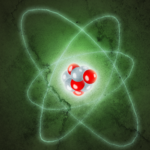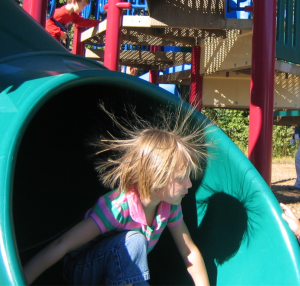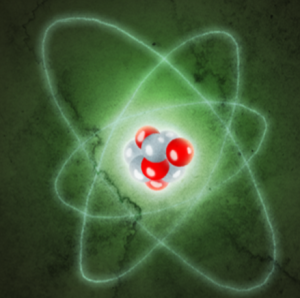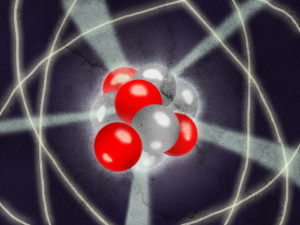In the last lesson we described a few ways to think about the difference between mass and weight. We also discussed the incredibly small mass of an electron when compared to the mass of a proton or neutron. And lastly, we discussed how in chemistry, we usually neglect the mass of the electron because it is so small compared to the mass of a proton or neutron.
A caveat point I should make – you may have often heard the terms mass and weight used almost interchangeably. Even though this is “technically” not accurate, sometimes it simplifies things to do so. (There are a lot of common phrases that we use to simplify things but are technically not proper English! Can you think of some?)
Here’s why –
The simplest and most effective way to measure the mass of an object is to observe how it reacts when a force is applied to it. Imagine someone throwing a golf ball at you verses a ping pong ball. They are both the same “size”, but the golf ball has a much larger “mass” than the ping pong ball. Since the golf ball has a much larger mass, it will exert a much larger force unto your body resulting in much more pain!
Now remember that weight is simply a measure of force – more superficially, a measure of force due to gravity (Instead of being thrown)! Therefore the simplest and most effective way to measure the mass on an object is to measure how much force it applies to a scale (either in your bathroom or in a laboratory) due to gravity. More simply – weigh it! If you know the weight, you can find the mass by simply dividing by the gravitational constant. But as long as you’re on planet earth the gravitational constant is the same everywhere. So as long as you’re on planet earth, the relationship between mass and weight does not change! And thus these terms are incorrectly, but practically used interchangeably.
Okay, so back to the mass of an individual subatomic particles. Through extensive experiments it has been determined that it would take roughly 1836 electrons to equal the mass of a single proton or neutron. Think about it this way – How much of your body’s weight do you imagine is due to protons and neutrons and how much of it is due to electrons?
For a 150 pound person, protons and neutrons would account for 149.94 pounds, while electrons would account for only 0.04 pounds. That’s only 0.02%. A normal bathroom scale doesn’t even measure to this degree of accuracy, so it couldn’t tell the difference between you with electrons and you without electrons (but if you didn’t have any electrons you would be dead).
Now we still run into the challenge of trying to measure the mass of a single subatomic particle. Since it was recognized that protons and neutrons accounted for almost the entire mass of an object, scientists decided to use the number of the protons and neutrons as a measurement of the mass. (At least a measurement of mass at the tiny atomic scale) This unit of mass was termed the Atomic Mass Unit, or “AMU” for short. So 1 AMU was equal to the mass of a single proton or neutron.
The AMU unit is defined as 1/12 of the mass of a carbon atom (or divide the mass of a carbon atom by 12). This is because a carbon atom has 6 protons and 6 neutrons, for a sum of 12 total protons and neutrons. So by dividing the mass of a single carbon atom by 12, you get mass of one proton or neutron (remember they are so similar in mass that they are assumed to be equal).
The AMU is still used today in most chemistry classes as a standard unit to measurement. It is also accompanied by another standard measurement for mass called the Mole, which accounts for each element differently, since each element is made from a different number of protons and neutrons. The Mole is a simple concept but is over-complicated in most chemistry courses. However, I will have save this discussion for another time since I want to get away from talking about too many minute details and get back to overarching concepts that are so incredibly intriguing to the whole of chemistry!




